History and the characteristics of the Jasmine plant
- Jasminum officinal, commonly known as Jasmine, is a species of a flowering plant from the olive family, Oleaceae. It has been dated to have its origins from Northern India, Iran (Persia), and Western China. Its current ranges grown from warmer temperature regions to the tropical zones.
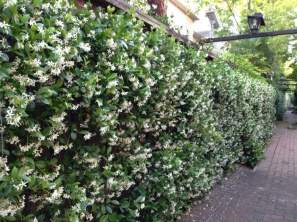
- Jasmine are known to be a perennial plants and the Jasmine plant grow by spreading or climbing as shrubs or vines.
- Jasmine is commonly known for its strong, unique aroma.
- Its bloom times spans from mid-summer into late fall.
- Jasmine bloosomes only open at night.
The Jasmine flower
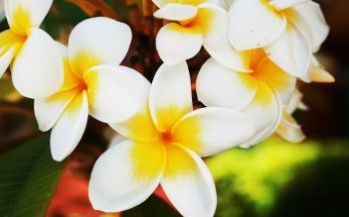
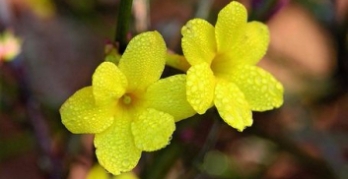
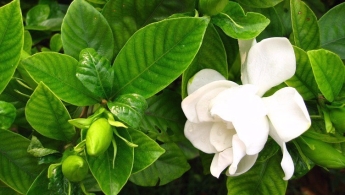
- Jasmine are small white-waxy flowers with a yellow center and oval, shiny leaves. Most of Jasmine flowers are white but can also be seen in yellow.
- Traditionally, Jasmine was grown for ornamental purposes and for its high aroma properties.
- It was first introduced in China, where the emperors found the aroma relatively pleasing.
- It was then followed by the Kings of Afghanistan, Nepal, and Persia who planted the flower along their residential areas.
- For years, Jasmine has been also used to relieve stress, depression, anxiety, and insomnia.
- It was also paired up with green or black tea in China.
- As early as the 13th century, the Chinese scented their teas and used Jasmine as a pain reliever such as using it to treat headaches, insomnia, and bone pains.
- In France, it has been dated to be used for fragrances purposes for centuries.
Symbolism of Jasmine
- China: The sweetness of women
- India: Divine hope
- Hindu: The perfume of love
Jasmine as a medicinal plant
Aroma Therapy
- Jasmine has been found to be used in aroma therapies since it deeply relaxes and soothes many patients. This method has been used to treat depression, build confidence and boost energy.
- The Jasmine oil has been used for headaches, by soothing the nerves and releasing certain hormones, including serotonin, which results in boost of energy and a uplift in mood.
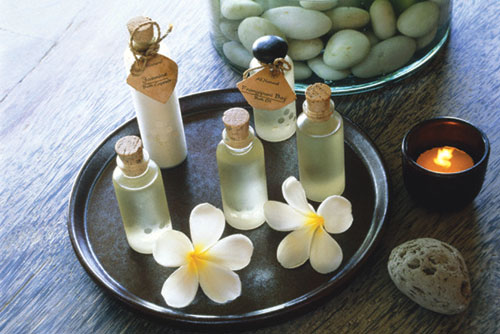
Health
- The leaves can be chewed to help with ulcers or eruptions in the mouth.
- The Jasmine oil is used as a cough remedy by reducing infections, when inhaled. The Jasmine plant is known to have antibacterial, antiviral, and anti-tumor properties.
- Jasmine has been made into lotions to aid in skin problems such as sunburns and rashes. In China, Jasmine is known to “cool the blood” so it is heavily used for sun exposure burns or burns from other heat sources.
Other unique benefits
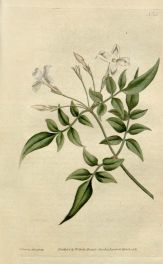
- Jasmine has been used in childbirth to help hasten the delivery by strengthening the contractions while relieving pain at the same time.
- Jasmine has also been linked to helping with sexual problems, such as impotence, as an aphrodisiac. It is said to have a “seductive” scent that can increase sensuality.
- Additionally, it is commonly known as a muscle relaxant by soothing muscles pains, sprains, and stiffness though. It does both of these by warming and softening nerves and tendons.
Chemical Properties
Antioxidant properties
- Jasmine flowers have been known to have lots of polyphenols, which have antioxidant properties. Alkaloids and Flavonoids are some biologically active compounds found in Jasmine.
Anti-fungal, anti-viral properties, and anti-inflammatory properties
- Benzoaldehyde, Benzoic Acid and Benzyl Acetate have effective germicidal, bactericidal, fungicidal and antiviral properties. Additionally, Alkaloids and Flavonoids have potent antimicrobial properties.
- Linalyl acetate is also known to be an anti-infammatory properties.
Terpene
- Linalool is a natural occurring terpene which has been shown to reduce stress and provide a strong aroma.
- Geraniol is a natural antioxidant which also provides the Jasmine flower with its strong aroma.
Current Research
Stimulating effect of aromatherapy massage with jasmine oil.
- The study looked at the benefits of aromatherapy massage using Jasmine oil in healthy individuals. They concluded that Jasmine oil caused significant increase in breathing rate, oxygen saturation, and systolic and diastolic blood pressure. This indicated arousal which shows that Jasmine oil does have the potential to relief depression and lift up moods.
Anti-inflammatory activity of linalool and linalyl acetate constituents of essential oils.
- In this study, they found that moderate doses of linalool extracted from essential oils reduced inflammation levels in rats with carrageenin-induced edema. More specifically, it reduced edema, which is swelling caused by fluid retention. This provided evidence that essential oils containing linalool and linalyl acetate are potentially anti-inflammatory agents.
Aromatherapy Massage Affects Menopausal Symptoms in Korean Climacteric Women: A Pilot-Controlled Clinical Trial
- The study looked at the effects of aromatherapy message in menopausal symptoms in Korean women. The women in the control group reported a lower menopausal index, a numeric index that scores the symptoms of menopause. This suggest that aromatherapy may be used to reduce menopausal symptoms such as hot flashes, depression, and pain.
Citations:
- http://feelingsandflowers.com/288/jasmine-flowers-%E2%80%93-the-queen-of-the-night/
- https://www.natureword.com/properties-and-benefits-of-jasmine/
- https://www.organicfacts.net/health-benefits/essential-oils/health-benefits-of-jasmine-essential-oil.html
- https://draxe.com/jasmine-oil/
- http://essentialoils.co.za/essential-oils/jasmine.htm
Picture Citations:
- http://www.twinings.de/webautor-data/9/Gross_greeantea_jasmin.png
- https://steve2013dotnet.files.wordpress.com/2013/05/wpid-photo-may-8-2013-733-pm.jpg
- https://www.organicfacts.net/health-benefits/essential-oils/health-benefits-of-jasmine-essential-oil.html
- http://www.herbco.com/images/category/studyguide/c-327-jasmine-flower-a-bit-of-botany.jpg
- https://www.flickr.com/photos/tuinieren
- http://justfunfacts.com/wp-content/uploads/2016/09/jasmine-4.jpg
Literature Citations
Hongratanawarakit T. 2010. Stimulating effect of aromatherapy massage with jasmine oil. Nat Prod Commum 5(1):157-62
Peana A.T., D’Aqula P.S., Dannin F., Serra G., Pippia P., Maretti MD. 2002. Anti-inflammatory activity of linalool and linalyl acetate constituents of essential oils. Phytomedicine 8:721-726.
Myung-Haeng H., Y.S. Yang, M.S. Lee. 2008. Aromatherapy Massage Affects Menopausal Symptoms in Korean Climacteric Women: A Pilot-Controlled Clinical Trial. Evid Based Complement Alternate Med (3): 325-328.
Page created by Hillary Cumbe
